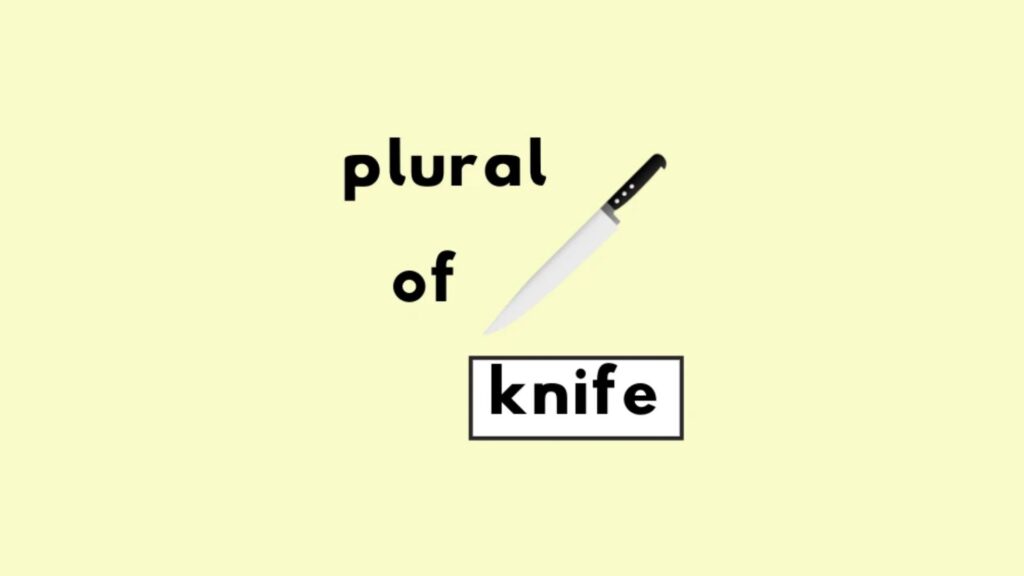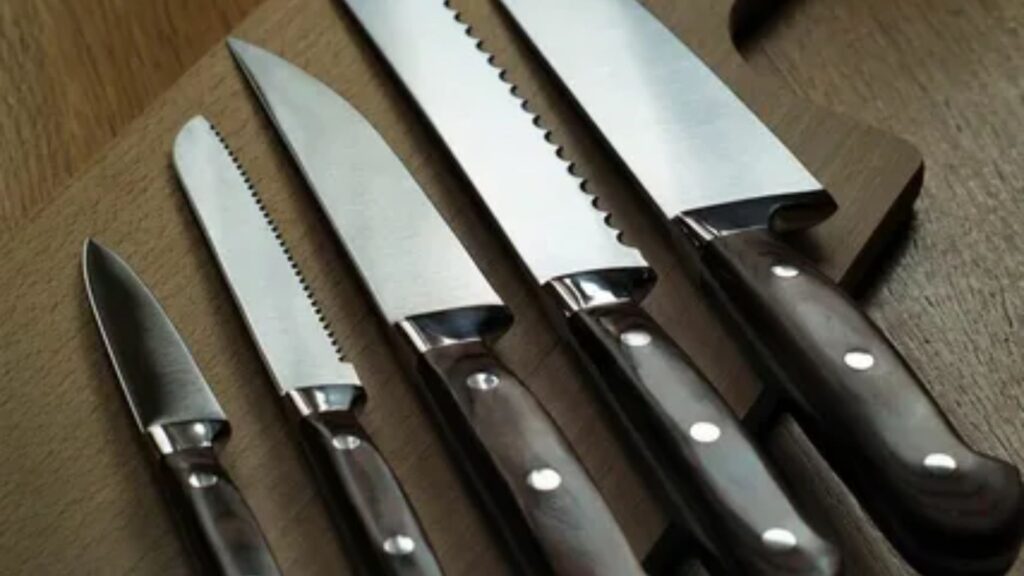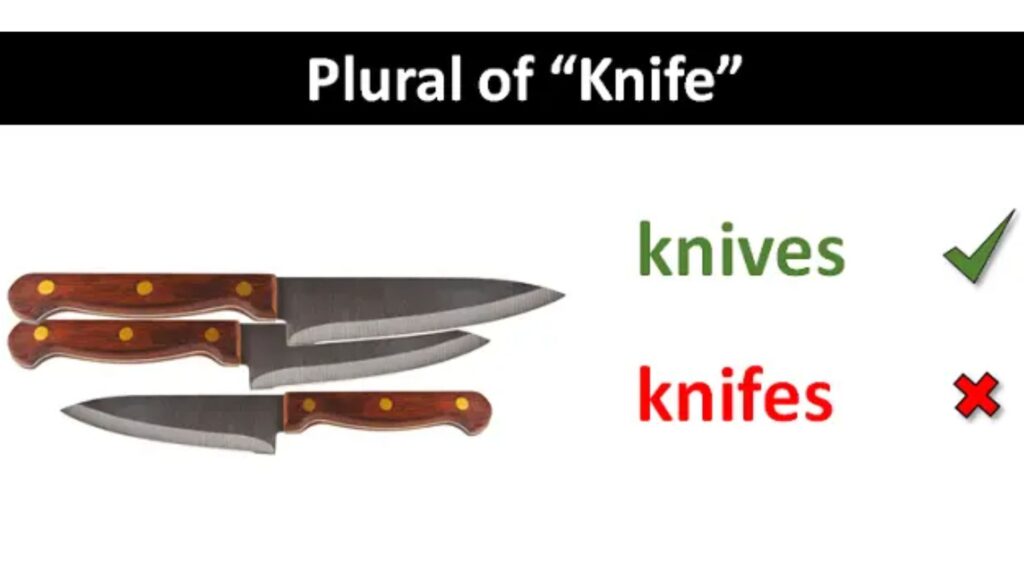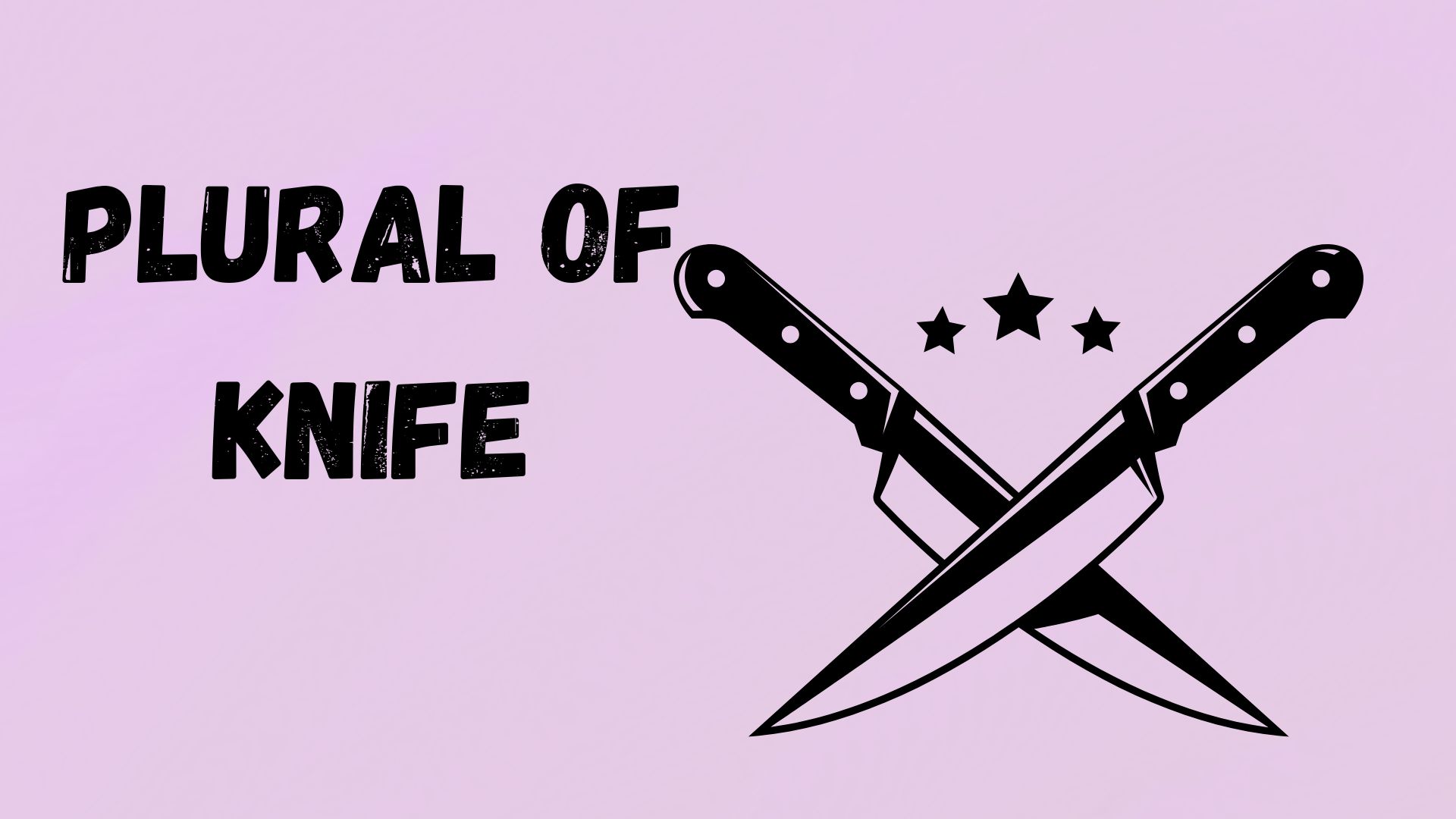Walk into any kitchen and you’re bound to find more than one knife but how do you say that correctly? Is it knifes or knives? If you’ve ever paused before writing that word, you’re not alone. English has some quirky grammar rules, especially when it comes to pluralization.
Let’s break it down with real-life examples, grammatical context, and even a bit of etymology to make this sharp topic crystal clear.
The Correct Plural of Knife

The correct plural noun for knife is knives.
Yes, the -f at the end of knife transforms into -ves when pluralized.
- Singular: knife
- Plural: knives
This change isn’t just random it follows a recognizable morphological pattern in English grammar, especially for nouns ending in -f or -fe. Think of:
- wife → wives
- life → lives
- leaf → leaves
So, the next time you’re talking about your kitchen set or buying tools for your campsite, you’ll know it’s knives, not knifes.
📧 Scenario Example #1: Email to a Restaurant Supply Store
Subject: Requesting Additional Kitchen Equipment
Hi Marcus,
We recently received the first shipment of our culinary tools, but we noticed the chef knives were missing from the box. Could you please send the knives by the end of this week?
We’d also like to add 6 more serrated knives to the order.
Thanks,
Chelsea, Head Chef, Artisan Bites
Notice how knives fits naturally when referring to multiple tools, especially in a kitchen context.
Why Not “Knifes”?
That’s a common question, and the answer lies in noun morphology. In English, irregular plural forms like knives often date back to older forms of the language think Old English, Proto-Germanic, and even Old Norse roots.
In Old English, knife was cnīf (singular) and cnīfas (plural). Over time, the modern plural shifted into -ves for phonetic and spelling regularity. These irregularities weren’t designed to frustrate learners they evolved naturally based on how the words were pronounced and used.
Grammar Rule: Nouns Ending in -f or -fe
If a singular noun ends in -f or -fe, it often but not always changes to -ves in the plural. Here’s a quick reference:
| Singular | Plural |
|---|---|
| knife | knives |
| wife | wives |
| life | lives |
| half | halves |
| wolf | wolves |
| loaf | loaves |
⚠️ But be cautious! Some words ending in -f or -fe are regular plurals, like:
- roof → roofs
- cliff → cliffs
- belief → beliefs
So while there’s a rule, there are always exceptions a true hallmark of English grammar.
🗣️ Scenario Example #2: Dialogue in a Kitchen
Alex: “Hey, where are all the sharp knives?”
Jamie: “I put the dirty knives in the dishwasher after lunch service.”
Alex: “Good. We can’t risk anyone cutting their finger on a dull blade again.”
Here, the plural form of knife is used naturally in context, and it just wouldn’t sound right to say knifes.
Types of Knives and Synonyms

In everyday usage, we don’t just say knife. We often talk about:
- chef knives
- butter knives
- steak knives
- paring knives
- throwing knives (yes, even in clubs or martial arts)
And when varying your language, synonyms like blade, scalpel, cutter, or bayonet can also appear depending on the context.
📧 Scenario Example #3: Email from a Club Security Manager
Subject: Incident Report – Friday Night
Hi Team,
A guest was found carrying concealed switchblade knives in the club last night. Security confiscated the knives immediately, and local authorities were informed.
Please make sure the front gate staff reviews all bags thoroughly.
Regards,
Leo, Head of Security
Again, the plural form “knives” is used to maintain both grammatical accuracy and professional tone.
Knife vs. Knives in Writing and Speech
The difference between knife vs knives grammar can change the entire meaning of your sentence. Let’s compare:
- I bought a new knife for slicing tomatoes. ✅
- I bought new knives for the kitchen staff. ✅
- I bought new knifes for the kitchen staff. ❌
That last example is incorrect. While knifes might feel logical based on general English noun rules, it simply isn’t valid here.
🔍 Etymology of Knife
The etymology of knife is rooted in Germanic and Norse history. The Old Norse word knífr meant “blade” or “cutting tool.” As English evolved, this term morphed into the word we use today, retaining its “silent k” and gaining that now-famous irregular plural form: knives.
Interestingly, many words with Norse or Germanic origins have irregular plural forms a leftover linguistic fingerprint from centuries ago.
Common Mistakes to Avoid
- ❌ Saying knifes instead of knives
- ❌ Using knife’s when you mean knives (possessive vs plural confusion)
- ❌ Pluralizing synonyms like blade as blades, which is correct but trying to apply the -ves rule incorrectly (blaves ❌)
Want more on this? Websites like Grammarflex often offer clear breakdowns of noun pluralization and other English grammar tips.
Grammar Recap: Knife Pluralization

To wrap it all up:
- Knife → Knives (irregular plural)
- Change -f to -ves for many nouns ending in -f/-fe
- Some exceptions exist: roof → roofs, belief → beliefs
- Use context kitchen, clubs, restaurants, camping gear to reinforce learning
- Know your noun morphology and history for long-term retention
Final Tip: When in Doubt, Think Context
If you’re unsure, try plugging the word into a sentence. Read it out loud.
“I packed four knifes for the picnic.”
Nope. That sounds off.
“I packed four knives for the picnic.”
Now we’re talking.
Let grammar sense and common usage guide you. Whether you’re writing a grocery list, emailing a colleague, or explaining cutlery to a student, knowing the proper plural form of knife helps you sound polished and accurate.
Summary Table: Knife Plural Form at a Glance
| Feature | Singular | Plural |
|---|---|---|
| Word | knife | knives |
| F-to-VES Rule? | ✅ Yes | ✅ Applies |
| Part of Speech | Noun | Noun |
| Irregular Plural? | ✅ Yes | ✅ Yes |
| Example in Sentence | I used a knife to cut. | We used knives to prep the meal. |
Want more content like this? Stay tuned for deep dives into English grammar, irregular plural patterns, and easy-to-remember language tips.
Let your writing be as sharp as your knives. ✂️

